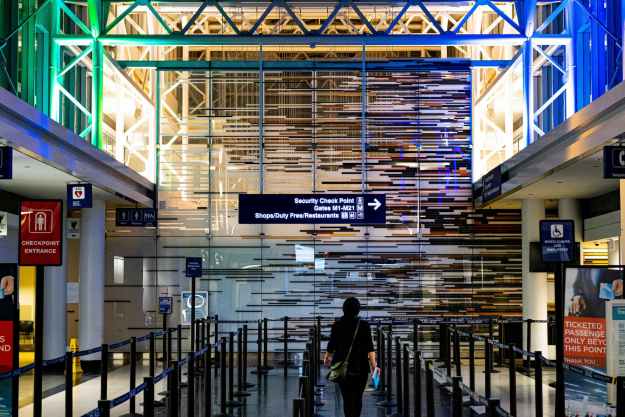We’re living in a Golden Age of portable, useful electronic gadgets. Including laptops, tablets, smartphones, and digital cameras, the average traveler packs a thousand dollars or more of electronics for any given trip. Unfortunately, both carrying and using these gadgets makes every one of us a target. Here are three ways to protect your valuables and your most sensitive information on the road.
Pacsafe
Hotel safes are a bit of a joke (look no further than this video which demonstrates just how easy they are to crack). While it seems like there’s no other alternative for physically securing your valuables while traveling, Pacsafe’s line of products is designed to do just that. The company offers backpacks, day bags, wallets, and innovative devices to secure your most important possessions on the road. While they differ in capacity and usefulness, the common thread (literally) that they all have in common is the patented, near-bulletproof eXomesh lining. The flexible stainless steel mesh is either woven into the fabric of their bags or thrown over your own bag to form a secure web that’s almost impossible to cut or break into. Simply secure it to any part of your hotel room that thieves aren’t likely to tamper with (plumbing is a good first choice) and you’ve created your own portable safe.
Related: How to Travel Anywhere With Only Carry-on Luggage
VPN
Of course, securing your valuables on the road isn’t just about your physical possessions. Public Wi-Fi hotspots — including hotels, airports, and cafes — offer little to no protection for your most sensitive digital information. The solution is a VPN — software that provides a secure, anonymous “tunnel” through which users can surf the web and check their email. TunnelBear is a free solution (bandwidth limits apply) that functions with the simple flip of a switch. Turn the app on when you need it, off when you don’t — there isn’t much more to think about. IPVanish is another simple, paid solution, but with a few more bells and whistles. Perhaps its best feature is that users can set the app to activate automatically when connected to specific open Wi-Fi networks (Starbucks, for example).
Secure Cloud Storage
Professional travelers know to carry multiple copies of their most important documents. This includes both printed and digital copies of passports, itineraries, travel/health insurance information, etc. The latter should always be stored in a cloud storage location with the best possible encryption. Of the major cloud storage providers, we like Dropbox — the company uses two-factor authentication, industry standard SSL encryption when transmitting your files, and AES-256 bit encryption when storing them. If your smartphone or laptop (with the Dropbox software is installed) is ever stolen, it’s simply a matter of “unlinking” the compromised device from your account to ensure the safety of your information.


